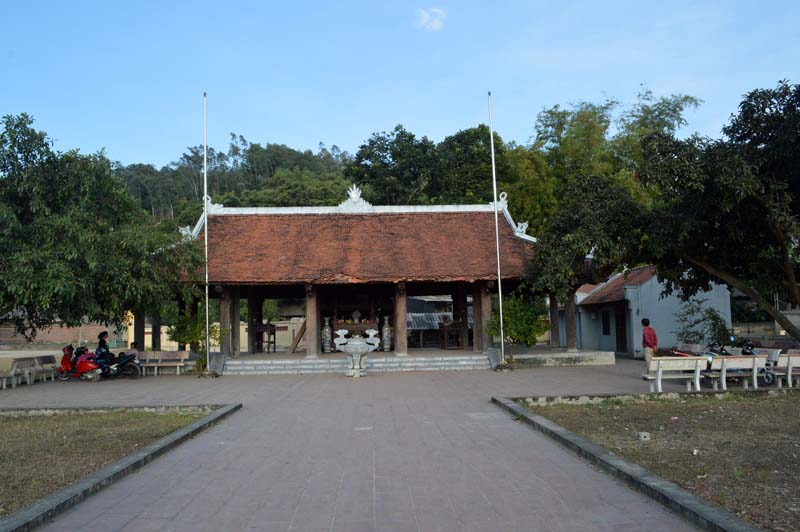
(HBO) – Authorities of the northwestern province of Hoa Binh have focused on preserving and promoting cultural heritage values since the beginning of this year. The provincial Department of Culture, Sports and Tourism directed localities to organise traditional festivals on the occasion of the New Year in a safe and economical manner, in association with the preservation and promotion of national cultural identity as well as cultural and historical relic sites.
Special folk
games were also designed to serve visitors during the traditional Lunar New
Year (Tet holiday). Recently, the Hoa Binh Museum hosted an exhibition in the
northern province of Hung Yen to introduce the unique culture of the Muong
ethnic group in the province.
The department has proposed the provincial
People’s Committee recognise four places as provincial relic sites, namely Nui
Kien Cave (Lung Van commune, Tan Lac district), Truong Kha temple (Lien Vu
commune, Lac Son district), the revolutionary site of the organisation of the
first Party Committee’s Congress in Lap Chieng commune (Kim Boi district), and
the revolutionary base of the Tong Kiem – Doc Bang insurgents in the
anti-France resistance war in 1909-1910 in Ky Son district.
The department has conducted fact-finding tours
and made scientific dossiers for four relic sites: site of the establishment
Regiment 12 – Hoa Binh in Cao Phong district; Quan Am pagoda in Phuc Tien
commune (Ky Son district); Cat Dun temple in Dong Tam commune (Lac Thuy
district); and Trang waterfalls in Do Nhan commune (Tan Lac district)./.
With an increasingly vibrant and widespread emulation movement aimed at building cultured residential areas and cultured families, Yen Thuy District has been making steady progress toward improving both the material and spiritual well-being of its people, while fostering a civilized, prosperous, beautiful, and progressive community.
Once lacking recreational spaces and community facilities, Residential Group 2 in Quynh Lam Ward (Hoa Binh City) has recently received attention for the construction of a new, spacious, and fully equipped cultural house. The project followed the model of state support combined with public contributions in both labor and funding.
The "All people unite to build cultural life" movement, which has been effectively integrated with Kim Boi district’s socio-economic development goals, is fostering a lively spirit of emulation across local residential areas, hamlets, villages, public agencies, and enterprises. In addition, through the initiative, traditional cultural values are being preserved and promoted, while community solidarity and mutual support in poverty reduction and economic development are being strengthened.
A working delegation of the Hoa Binh provincial People’s Committee led by its Permanent Vice Chairman Nguyen Van Toan on June 11 inspected the progress of a project to build the Mo Muong Cultural Heritage Conservation Space linked to tourism services in Hop Phong commune, Cao Phong district.
Born and growing in the heroic land of Muong Dong, Dinh Thi Kieu Dung, a resident in Bo town of Kim Boi district, in her childhood was nurtured by the sweet lullabies of her grandmother and mother. These melodies deeply imprinted on her soul, becoming an inseparable part of her love for her ethnic group's culture. For over 20 years, this love for her hometown has driven Dung to research, collect, and pass down the cultural values of the Muong people to future generations.
In the final days of May, the Ethnic Art Troupe of Hoa Binh Province organized performances to serve the people in remote, mountainous, and particularly disadvantaged areas within the province. These were not just ordinary artistic shows, but they were the meaningful journeys aimed at spreading cultural values, enhancing the spiritual life of the people and contributing to the preservation of ethnic minority cultural identities.


